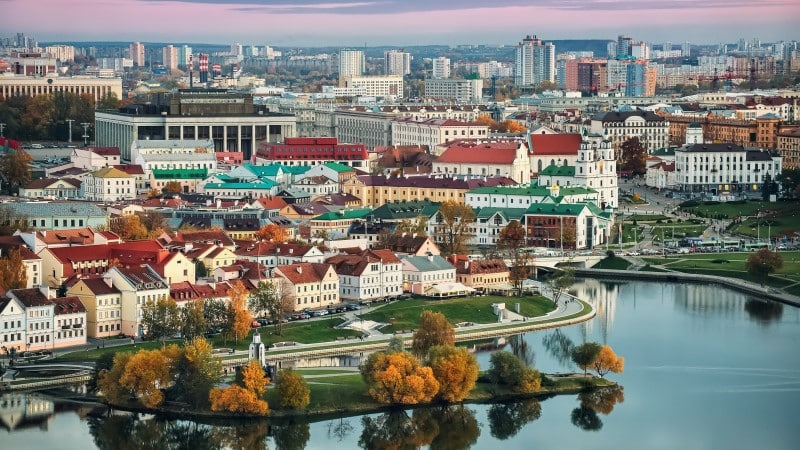About Belarus:
- It is a landlocked country of eastern Europe.
- Bordering countries: It borders Russia to the northeast, Ukraine to the south, Poland to the west, and Lithuania and Latvia to the northwest.
- The capital and largest city is Minsk.
- Languages:
- Spoken languages are Belarusian (official) 24%, but 70% speak Russian (official).
- Ethnic Belarusians, who speak a language closely related to Russian and Ukrainian, make up more than three-quarters of the population.
- Relief:
- Much of the country consists of flat lowlands separated by low level-topped hills and uplands.
- About 40% of the country is forested; Białowieża Forest is one of the last and largest remaining parts of the immense primeval forest that once stretched across the European plain.
- Rivers:
- The greater part of the republic lies in the basin of the Dnieper—which flows across Belarus from north to south on its way to the Black Sea.
- The extreme southwestern corner of Belarus is drained by the Mukhavyets, a tributary of the Bug (Buh) River, which forms part of the border with Poland and flows to the Baltic Sea.
- Climate: It has a cool continental climate moderated by maritime influences from the Atlantic Ocean.
- Until it became independent in 1991, Belarus, formerly known as Belorussia or White Russia, was the smallest of the three Slavic republics included in the Soviet Union (the larger two being Russia and Ukraine).
Q1) Which were the Slavic republics included in the Soviet Union?
On December 30, 1922, in post-revolutionary Russia, the Union of Soviet Socialist Republics (USSR) is established, comprising a confederation of Russia, Belorussia, Ukraine and the Transcaucasian Federation (divided in 1936 into the Georgian, Azerbaijan and Armenian republics).
Source: Russia-friendly Belarus’ Embassy Vandalised in Netherlands as Wagner Boss’ Exile Begins | Watch
Last updated on June, 2025
→ UPSC Notification 2025 was released on 22nd January 2025.
→ UPSC Prelims Result 2025 is out now for the CSE held on 25 May 2025.
→ UPSC Prelims Question Paper 2025 and Unofficial Prelims Answer Key 2025 are available now.
→ UPSC Calendar 2026 is released on 15th May, 2025.
→ The UPSC Vacancy 2025 were released 1129, out of which 979 were for UPSC CSE and remaining 150 are for UPSC IFoS.
→ UPSC Mains 2025 will be conducted on 22nd August 2025.
→ UPSC Prelims 2026 will be conducted on 24th May, 2026 & UPSC Mains 2026 will be conducted on 21st August 2026.
→ The UPSC Selection Process is of 3 stages-Prelims, Mains and Interview.
→ UPSC Result 2024 is released with latest UPSC Marksheet 2024. Check Now!
→ UPSC Toppers List 2024 is released now. Shakti Dubey is UPSC AIR 1 2024 Topper.
→ Also check Best IAS Coaching in Delhi






















